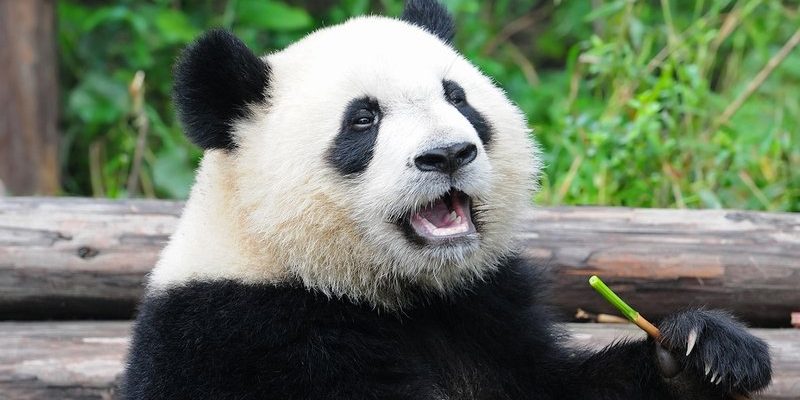
Honestly, it’s similar to how we sometimes misinterpret a movie trailer—we judge the whole story by a brief glimpse. Just like those trailers can oversimplify plots, the information we often hear about pandas can be misleading. So, grab a cup of coffee, and let’s explore the truths and myths about these beloved animals.
Myth 1: Giant Pandas Are Bears
You might be thinking, “Well, they look like bears. What’s the issue?” Here’s the thing: yes, giant pandas belong to the bear family, but they have some unique traits that set them apart. Unlike your typical bear, giant pandas primarily eat bamboo. It’s a big part of their diet—up to 99%! This can give them a more docile demeanor compared to other bears, which are often more omnivorous.
Moreover, their digestive system is designed more like that of herbivores, rather than carnivores. Even though they have the digestive tract of a bear, which usually signifies a meat-eating diet, pandas have adapted to get as much nutrition from bamboo as possible. Unfortunately, this means they spend a lot of their time eating—around 10 to 16 hours a day! Can you imagine munching on one type of food for that long?
So, while they are scientifically classified as bears, their habits and diet make them a unique branch of the bear family tree.
Myth 2: All Giant Pandas Are Black and White
It’s easy to assume that all giant pandas sport that iconic black and white coloring. But here’s a fun fact: not all pandas are monochrome! Some can have shades of brown and lighter tones, especially in the wild. This coloration is rare but does happen—imagine stumbling across a panda that looks like it walked right out of a chocolate factory!
The variations in shade can be attributed to genetics and environmental factors. While the classic black-and-white pattern serves as excellent camouflage in their natural habitat of dense forests and bamboo thickets, it doesn’t mean every panda adheres to that color scheme.
It’s a bit like how people come in various shapes and colors. Nature loves diversity, and the panda world is no exception!
Myth 3: Giant Pandas Are Lazy
You often hear people describe pandas as “lazy” because they spend so much time eating and resting. While it’s true they are less active compared to other bears, calling them lazy is a misnomer. It’s more about energy conservation. Since bamboo is low in nutrients, pandas must consume a massive amount to meet their energy needs.
Think of it this way: if you had to eat 20 meals a day of something low in nutrition, you’d want to rest a lot, too! Pandas have adapted to this lifestyle because they need to conserve their energy for both eating and finding mates. They might not be running marathons, but they’re working hard in their own way.
Plus, pandas are not entirely devoid of playful energy—young pandas are known for their playful antics, climbing trees, and wrestling with each other. So, while they might seem to be taking it easy, there’s more to their behavior than meets the eye!
Myth 4: Giant Pandas Are Endangered Because They Can’t Reproduce
Many folks believe that giant pandas have low reproduction rates, which contributes to their endangered status. While it’s true that they have a limited breeding season (just a few days each year), saying they can’t reproduce is a stretch. The real challenge lies in their habitat loss and the fact that they are very particular about choosing mates.
In the wild, successful breeding is often hindered by the fragmentation of their habitats due to human encroachment. When you think about it, it’s like trying to find a date in a crowded room where everyone is too far apart to connect! Zoos have been working hard to improve breeding success with artificial insemination and proper care, resulting in more cubs.
So, while their reproduction rates aren’t high, it’s not solely because pandas can’t breed—it’s definitely more complex than that.
Myth 5: All Giant Pandas Live in China
Most people picture giant pandas living only in China, and while that’s true for the vast majority, they’re not completely confined there. Some zoos worldwide have bred giant pandas successfully, often as part of conservation efforts. It’s almost like sharing a delicious recipe—when one place discovers how to make it work, others want a taste too!
In the wild, pandas are primarily found in a few mountainous regions in China. However, international collaboration on panda conservation means they can thrive in different environments, even if it’s temporarily. It highlights how important global efforts are in saving endangered species.
These breeding programs help researchers learn more about pandas, which is crucial for their survival and helps raise awareness. So, while the heart of giant panda habitation is indeed in China, they’re making appearances around the globe!
Myth 6: Giant Pandas Are Aggressive
There’s a misconception that giant pandas are aggressive due to their size and strength. In reality, they are typically docile creatures. Sure, like any animal, they can become defensive if threatened, but they generally maintain a peaceful demeanor. This is especially true when they’re in their natural habitat, where they spend most of their time munching on bamboo.
Think about it: they have no natural predators apart from humans, which means they don’t have to exhibit aggression for survival. Their most fearsome behavior is often reserved for competing with other pandas for food or mates. So, while they have strength, they’re more about being chill than being fierce.
Understanding this helps debunk the image of pandas as unpredictable creatures. It’s like mistaking a friendly dog for a ferocious wolf just because of its size.
Giant pandas are truly intriguing animals, and the myths surrounding them often overshadow their remarkable qualities. By exploring the truths about these gentle giants, we gain a better appreciation for their role in our ecosystem and the importance of their conservation.
As we’ve seen, pandas are not just adorable creatures that sit around looking cute; they have a rich life filled with their own challenges and triumphs. The next time you spot a panda—whether in a zoo or a nature documentary—take a moment to appreciate the layers of their existence and the effort required to protect them.
In this way, we can all play a part in ensuring that future generations get to enjoy the fascinating world of giant pandas, free from the myths that cloud our understanding.

